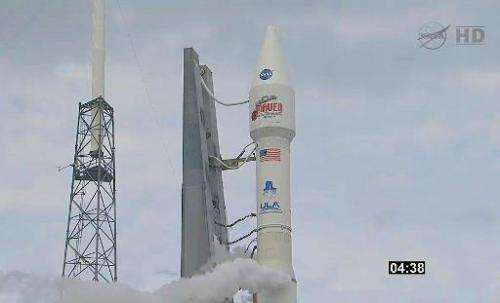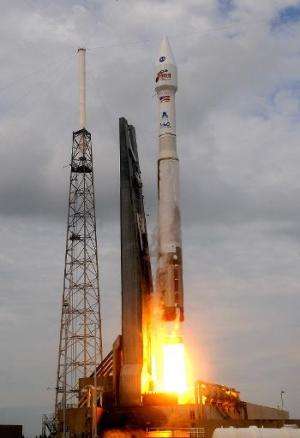MAVEN Mars spacecraft to begin orbit of Red Planet

A NASA spacecraft that aims to study the upper atmosphere of Mars and reveal how its climate changed over time is poised to begin orbiting the Red Planet on Sunday.
After a 10-month journey, the Mars Atmosphere and Volatile Evolution (MAVEN) probe is making its final approach to Mars and will begin circling Earth's neighbor after 9:30 pm Sunday (0130 GMT Monday).
MAVEN's findings are expected to help pave the way for a future visit by humans to the Red Planet, perhaps as early as 2030.
MAVEN, an unmanned spacecraft, has traveled 442 million miles (711 million kilometers) since it launched late last year.
NASA television coverage of the orbital insertion begins at 9:30 pm (0130 GMT). The process will start with the brief firing of six small thruster engines to steady the spacecraft, NASA said.
"The engines will ignite and burn for 33 minutes to slow the craft, allowing it to be pulled into an elliptical orbit with a period of 35 hours," the US space agency said.
Once MAVEN begins circling Mars, it will enter a six-week phase for tests.
Then, it begins a one-year mission of studying the gases in Mars' upper atmosphere and how it interacts with the sun and solar wind.
Much of MAVEN's year-long mission will be spent circling the planet 3,730 miles above the surface.

However, it will execute five deep dips to a distance of just 78 miles above the Martian landscape to get readings of the atmosphere at various levels.
"The MAVEN science mission focuses on answering questions about what happened to the water and carbon dioxide present in the Mars system several billion years ago," said Bruce Jakosky, MAVEN principal investigator from Colorado University-Boulder's Laboratory for Atmospheric and Space Physics.
"These are important questions for understanding the history of Mars, its climate and its potential to support at least microbial life."
NASA has sent several rovers and probes to Mars in recent years. The latest robotic vehicle, Curiosity, is exploring Gale Crater and Mount Sharp, looking for interesting rocks and returning data on whether the Martian environment shows evidence of a past ability to support life.
Mars is widely believed to have been wet and warm—conditions that could have supported some form of life—in the distant past.
Scientists are trying to understand if life ever evolved on the Red Planet, and what happened to transform Mars into a dry, barren planet.
A human mission to Mars could happen by the 2030s, according to NASA.
A trip there would take astronauts farther than they have ever ventured before, and it remains unclear if those first pioneers would be able to return to Earth.
More information: NASA: mars.nasa.gov/maven/
© 2014 AFP



















